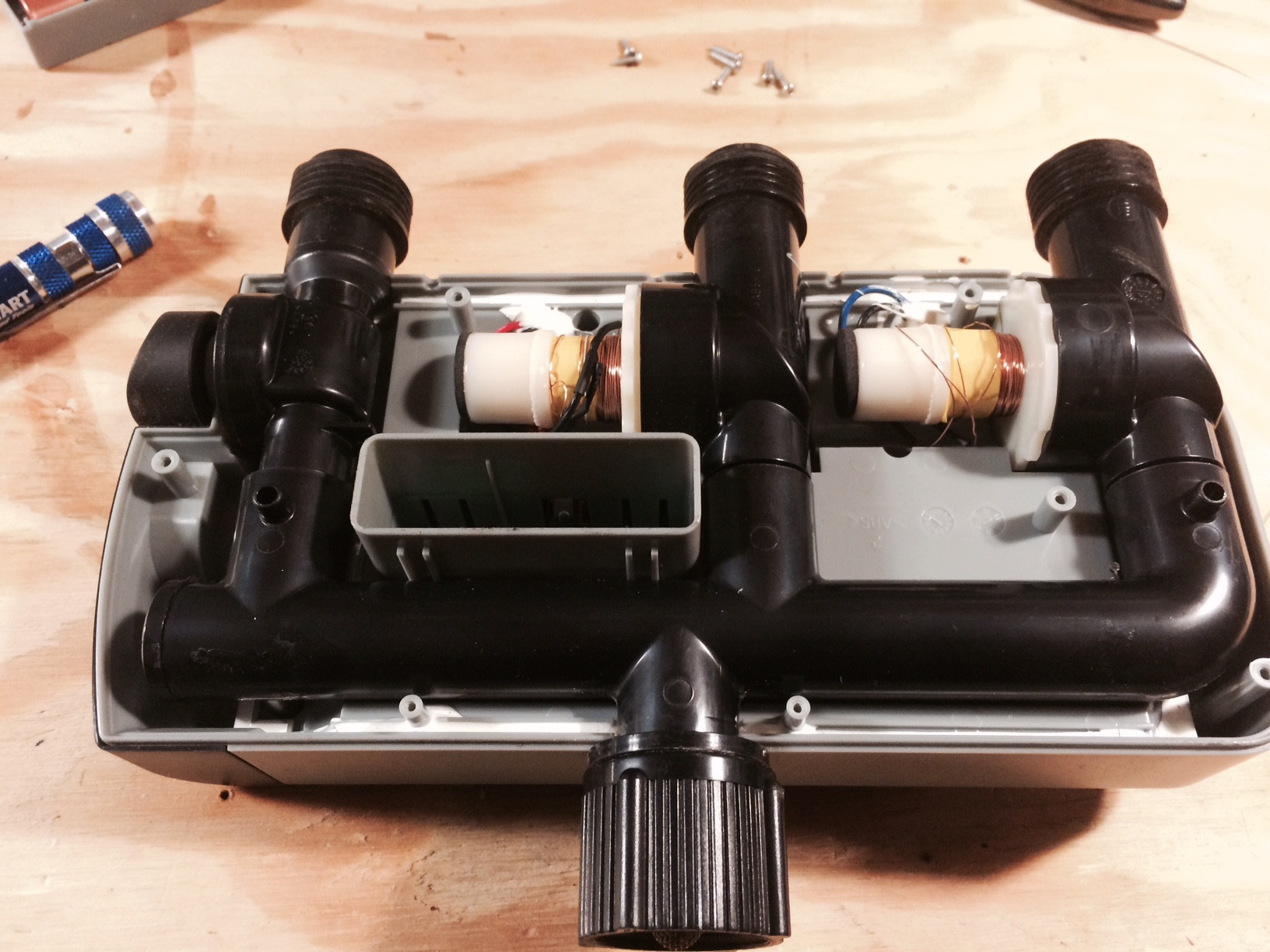I have a automatic watering timer that I purchase from the internet. I'm attempting to hack it into something that I can either trigger from a micro-controller, or sense when the solenoid has been opened, and respond accordingly with the micro-controller. The unit runs on 2 AA batteries, so I'm assuming its 3V, there are a number of components and then 4 leads ( two for each solenoid ) that run to a coil. I tried measuring the voltage across the solenoid when the valve opens but the way the components are configured, it makes it impossible to power, control and measure it. I also wonder if the solenoids are solenoids all at or some other mechanism. I realize that my question is some what vague, but perhaps someone has had experience taking one of these garden watering timers apart and can give me some place to start.






